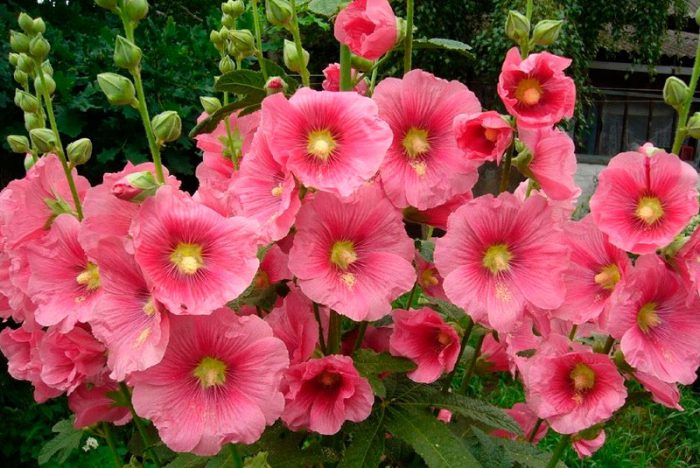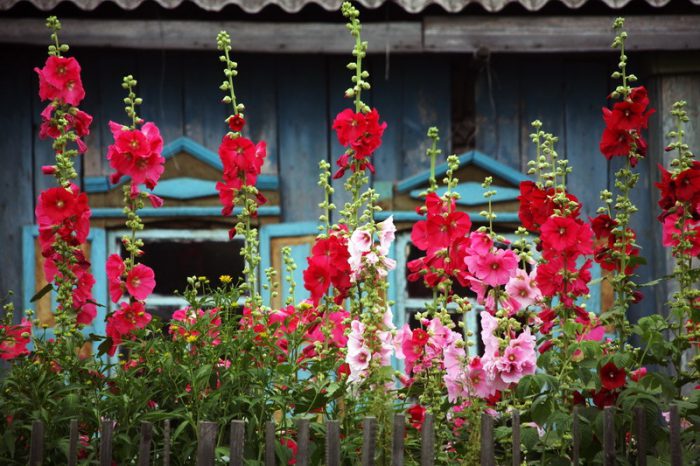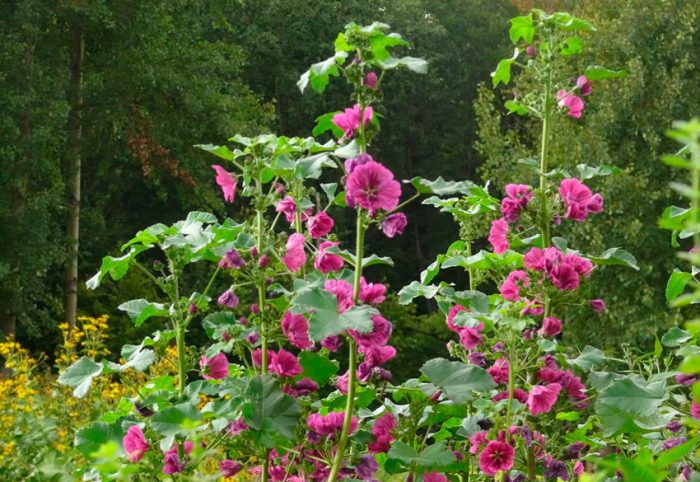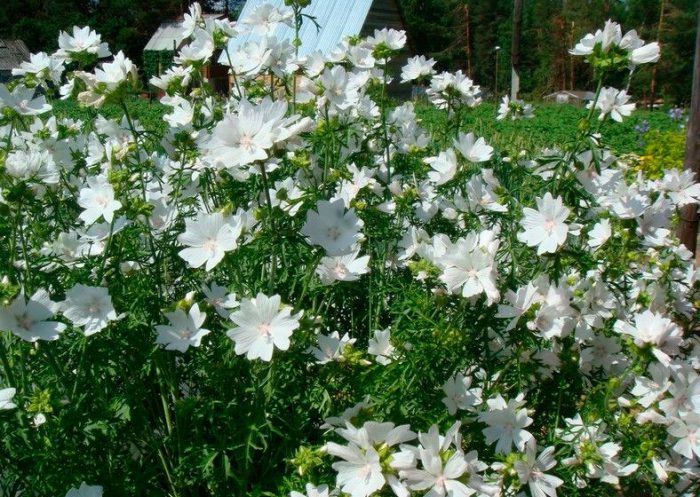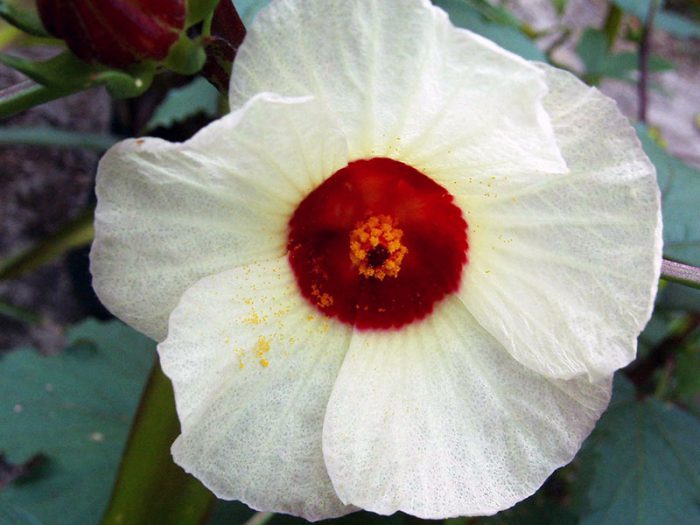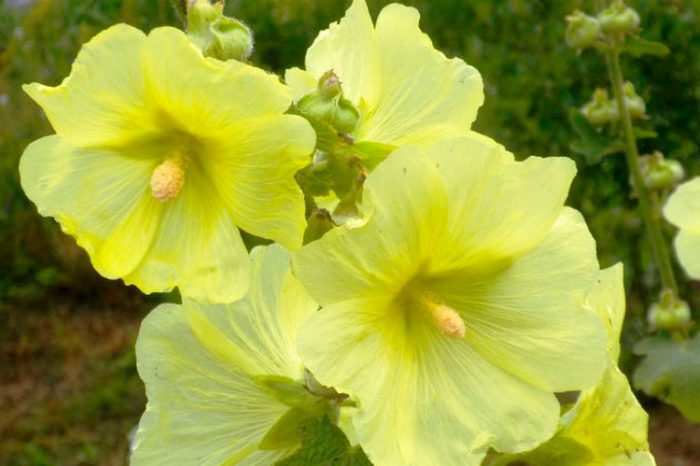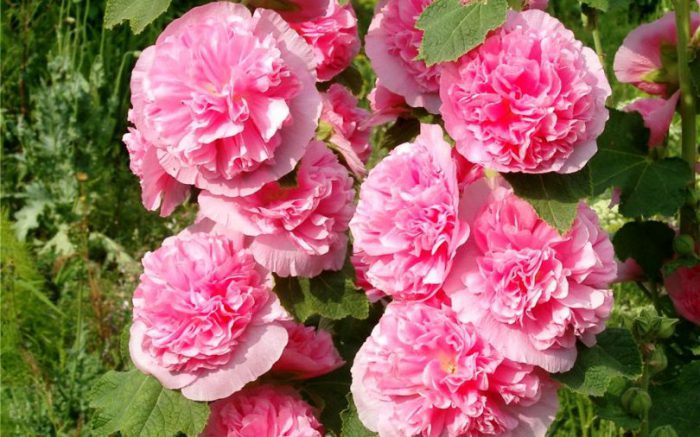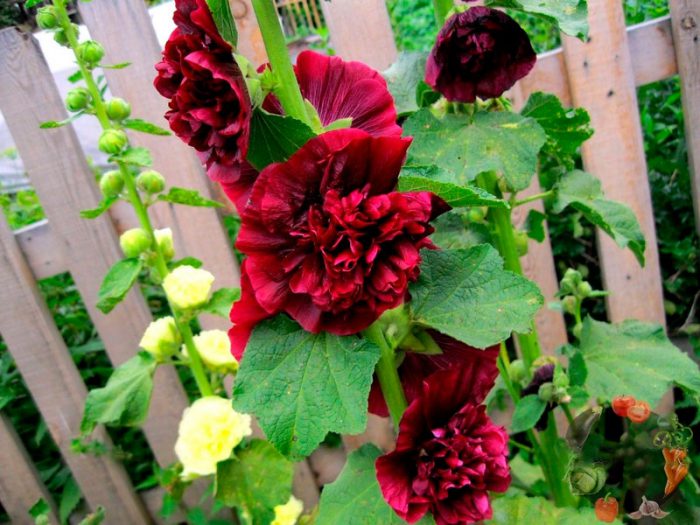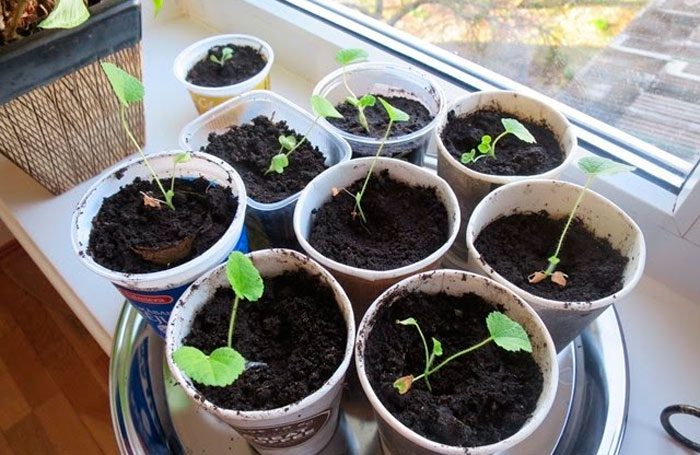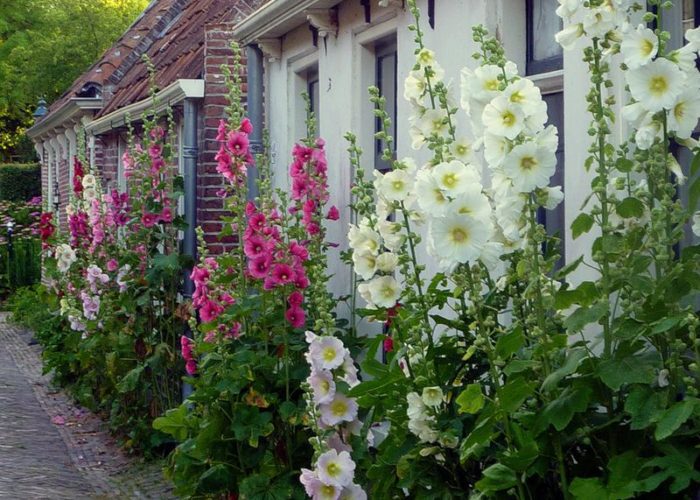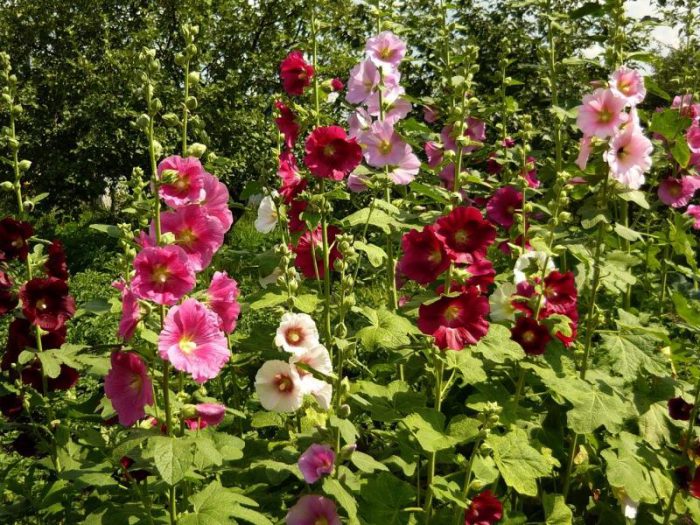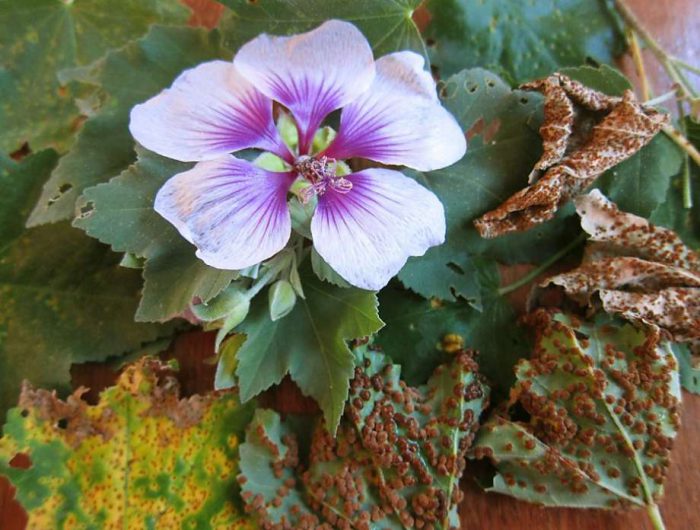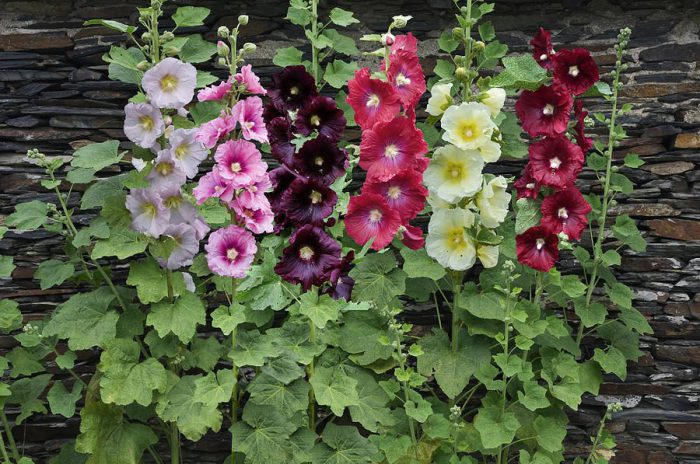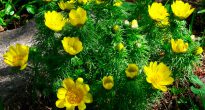A plant such as mallow (Malva) is also called kalachik, mallow, and also a stock-rose. It is directly related to the mallow family. Most often, such a herb is an annual, but it can also be a biennial and perennial. This genus today unites about 30 different species found in the wild. They prefer to grow in temperate climates and in the wild, mallow can be found in North America, Europe, North Africa and Asia. Mallow cultivation began in Ancient Greece and Ancient Egypt. So, in the writings of Piny the Elder and Hippocrates, a description of the medicinal properties of this flower was found. In the 20s of the twentieth century, experts found ecological plasticity in this plant, as well as high feed qualities. Artists happily painted their large, deep pink flowers, and poets admired them in their poems.
Content
Features of mallow
Forest mallow is the most common representative of this genus. The height of the shoots can vary from 30 to 120 centimeters. They can be either recumbent, straight or ascending. The surface of young stems is covered with hairs, which eventually disappear, and the shoots become naked. Petiolate, 5-7-lobed or incised leaf plates are round or heart-shaped. They have a petiole, and pubescence is on the surface. The diameter of the flowers can be up to 12 centimeters. Their shape is similar to a wide bell. On the surface of the flower there are stripes of purple color characteristic of mallow. They are located in the leaf axils of 1–5 flowers. There are species with racemose inflorescences. Flowers can be simple or double, and their color directly depends on the variety and can vary from white to almost black. Deep indentable oblong petals have an obovate shape. The long branched rhizome has a fusiform shape. The fruit is a polysperm, the seeds remain viable for 2-3 years. Flowering is observed from the beginning to the end of the summer period. Mallow is resistant to frost, drought and is also very easy to care for.
Types and varieties of mallow with photo
In culture, this genus unites about 60 plant species. Forest mallow, considered the progenitor of this genus, is an annual. Perennial plants are such types of mallow as: hybrid, wrinkled, Sudanese, and musky. However, some of the growers are sure that not all of these species are representatives of the mallow genus. So, wrinkled mallow (stock-rose) and Sudanese mallow (hibiscus), as they say, must be attributed to a different genus of the mallow family. Despite some external differences, these plants must be looked after in the same way.
Annual mallow
Forest mallow (Malva sylvestris), which we also call kalachiks, is a biennial, but it is cultivated as an annual. The height of the bush can reach 1.2 meters, while on the petals there are veins characteristic of mallow, which are painted in a darker color than the flower itself. The most popular variety is Zebrina mallow. Such a plant has light pink flowers of a fairly large size, which have streaks of dark red color. Still no less popular is such a variety as "Black Mother of Pearl"; large (about 7 centimeters in diameter) dark purple flowers have streaks of black color.
Perennial mallow
Musk mallow (Malva moschata)
It is also called nutmeg - the height of such a perennial plant is no more than 100 centimeters. The diameter of fragrant flowers is 5 centimeters, they can be painted pink or white. The most popular varieties are the Rose Tower and White Tower, which have deep pink or snowy white flowers, respectively, located on a bush that reaches a height of 0.7 meters. These varieties continue to bloom until the first frost.
Sudanese mallow
Also called the Sudanese rose and Sabdariff's hibiscus - this biennial is cultivated for its fruits. They have long been part of many fruit drinks and have medicinal properties. The treelike form Malva sabdariffa var is very popular. Altissima, as well as the shrub form Malva sabdariffa var. Sabdariffa.
Mallow wrinkled
They are also called stock-rose and alcea wrinkled - such a plant is conventionally called mallow. In the wild, this perennial plant can reach a height of 200 centimeters, the diameter of its yellow flowers is 3 centimeters. In the garden, a stock-rose mallow or a stock-pink mallow (Malva alcea) is grown. The height of such a perennial plant does not exceed 0.9 meters. There are varieties with double, simple and semi-double flowers that look similar to peonies. For example, the variety "Chater's Double Strein" has large double flowers that can be painted in various colors, while the variety "Single Mixed" has simple flowers similar to hibiscus. Also, varieties of such a plant are distinguished by size. For example, the cultivar "Powder Puffs Mixed" can grow up to 200 centimeters in height, while a cultivar like Majorette Mixed is dwarf, its bushes reach only 75 centimeters in height, but it has rather large semi-double flowers.
Malva hybrid (Malva hybrida)
Such a perennial plant has several shoots, while the height of the bush can reach 200 centimeters. Quite large double flowers can be painted pink or white. Bloom is observed from June to September. The most popular varieties are Chaters Double, Gibbortello, Powder Puffs.
It must be remembered that those varieties that belong to forest mallow are almost all considered annual plants, while the rest of the varieties are perennial. At the same time, both perennial plants are found among conditional annuals, and annuals are among conditional perennials.
Growing annual and perennial mallow from seeds
How to grow mallow
In the event that you are not in a hurry and can wait until next year until the mallow blooms, then sowing seeds can be done directly in open soil in May – June. In this case, before the first winter frosts begin, only leaf rosettes will form in the flowers, while flowering will come only next year. In the event that you want to see the flowering of mallow during this summer period, then sowing seeds for seedlings should be done in January or February. The seedling method of growing mallow is largely superior to the seed method, as it is more reliable, even when you plant biennials or perennials. Sowing seeds of annuals and perennials is absolutely identical, but they should be planted at different times. Sowing of annuals is carried out in the middle of the winter period, the seedlings are transplanted into open soil in May, and flowering begins in the middle of summer. Biennials and perennials are sown in May, and grown seedlings are planted in open soil only in August – September.
Mallow seedlings
If the mallow seeds are not fresh or were purchased in a special store, then before sowing, they need to be prepared. To do this, they need to be immersed in lukewarm (about 45 degrees) water for half a day. As a result, the tough shell will soften and the seedlings will appear much faster. Seed germination of this plant lasts for 3 years, and at the same time it was noticed that in the last year of its storage the percentage of germination is relatively higher. Sowing these seeds is best done in special pots made of peat, the fact is that the root system of such flowers is quite delicate and often the transplanted plants cannot take root and die.
The optimum temperature for seed germination is from 18 to 22 degrees, in this case you will see the first seedlings in half a month. In the event that the seeds were sown in a container, then when the plants have 3 true leaves, it will be necessary to thin out the seedlings. So, the distance between seedlings should be equal to 2 to 3 centimeters. If desired, extra seedlings can be very carefully dived into the peat pots. The grown and matured seedlings must be hardened. To do this, it should be carried outside for several hours a day. From May to June, you can plant mallow in open soil without removing it from the peat pots.


Watch this video on YouTube
Planting mallow in open ground
Suitable soil
For mallow, you need to choose a well-lit area. In partial shade, it will also grow, but its color will not be so saturated, and the shoots will be relatively low. The soil is better to choose loamy, well-drained, rich in humus. For planting, you need to choose a site located on a hill, since if melt water stagnates in the soil, then rot may appear on the root system of the plants. It is best if the site is protected from wind gusts and drafts. It is recommended to plant these flowers near the fence, in this case, it will be possible to tie long stems directly to it. If the soil is not rich in nutrients, then fertilization will be required. To do this, you will need to sprinkle the area with a layer of mulch (humus).
Open ground planting rules
Seedlings of annual varieties should be transplanted into open soil in mid-May. It should be remembered that seedlings of perennial or biennial varieties must be planted in the garden only in August or September. Sowing seeds of biennials and perennials can be done directly in open soil. This should be done in the spring from April to May, when frosts pass. To do this, shallow (about 3 centimeters) small pits must be made in the ground and 2 or 3 seeds must be put in each of them.The distance between the holes can vary from 25 to 50 centimeters, depending on the type of plant. The well is filled with soil, lightly tamped and watered with a small amount of water. In the event that frosts are expected, the garden must be covered with a covering material, in this case you will be able to protect the seedlings from freezing. If the weather is warm, you will see the first seedlings after half a month. After the appearance of the third or fourth leaf, it is necessary to thin out the crops. So, one of the strongest seedlings should remain in the hole.
Features of garden care
How to care for mallow
It is very easy to grow mallow, as it does not have a capricious character. It should be regularly watered in moderation, especially if the summer period is dry enough. The surface of the soil must be loosened in a timely manner, as well as weeds and fading flowers must be removed. Before the budding period begins, experts advise feeding the plants with mineral fertilizers, which contain a large amount of nitrogen. Tall varieties need a mandatory garter, as the stems can be injured in case of strong winds. To do this, it is recommended to plant plants in the immediate vicinity of the fence (use it as a support), and you can also put a high peg next to each bush and tie a mallow to it. In the event that you want your annual mallow to grow like a perennial, then when it fades, all flower stalks should be removed from the stems. It is important to have time to do this before the seed set.
Pests and diseases
Slugs can settle on such flowers. Destroy them using special traps. To do this, put several plates on the area with flowers and fill them with beer. After about 24 hours, you will need to check the trap data and remove all slugs. This plant is quite resistant to diseases, but if it is planted near a metal fence, then the mallow is quite capable of contracting rust. It is very easy to find out about the infection, so, on the seamy side of the leaf plates, you can see dark red spots. Infected foliage should be trimmed and destroyed. In rare cases, infection with powdery mildew is possible. To get rid of it, use an appropriate fungicide or colloidal sulfur solution.
Post-flowering care
In the autumn, after flowering, the shoots must be cut to the level of the soil surface. At the same time, you can enrich the soil with nutrients, for this, its surface must be covered with a layer of mulch (compost and humus). So, for 1 square meter you will need about 3-4 kilograms of mulch. For wintering, such a plant should be covered with dried leaves, spruce branches or straw.
Healing properties of mallow
This plant has long been used in folk medicine. It has many healing properties well known to healers from different parts of the world. For example, an infusion made from foliage and flowers has long been treating inflammatory processes in the stomach, as well as bowel disorders. If you steam the foliage or flowers of the forest mallow (mallow) and add it to a hot bath, then taking it will allow you to get rid of the spleen tumor as soon as possible. Mallow herb is included in almost all breast fees. A decoction is made from the flowers, which is used for compresses and lotions for various skin diseases. They perfectly eliminate itching, and also contribute to the early healing of wounds (most likely due to the mucus found in such a plant). Such flowers are also used in medical cosmetology, since they are able to restore the epidermis, and also have a preventive effect against pustular eruptions. Flowers are most often used in folk recipes, as they contain more vitamin C, sugars and keratin than foliage.And yet, all such folk remedies have no contraindications or side effects. This plant has a softening, enveloping, tonic, expectorant, reparative and anti-inflammatory effect.
Cough saving tea: pour 2 full small spoons of crushed fresh flowers or leaves into a glass and fill it with freshly boiled water. Let it sit for 10 minutes, then strain. You should drink 2 or 3 glasses a day. If you want to add honey to the drink, then in this case you have to wait until the infusion is not hotter than 40 degrees.
In May, every year in Kamigam, which is a Kyoto temple, and directly in the city itself, the Aoi Matsuri festival is held, which is arranged in honor of the mallow. At the same time, people dress in clothes of rich colors and parade along the city streets singing and dancing. This holiday arose several hundred years ago ...

